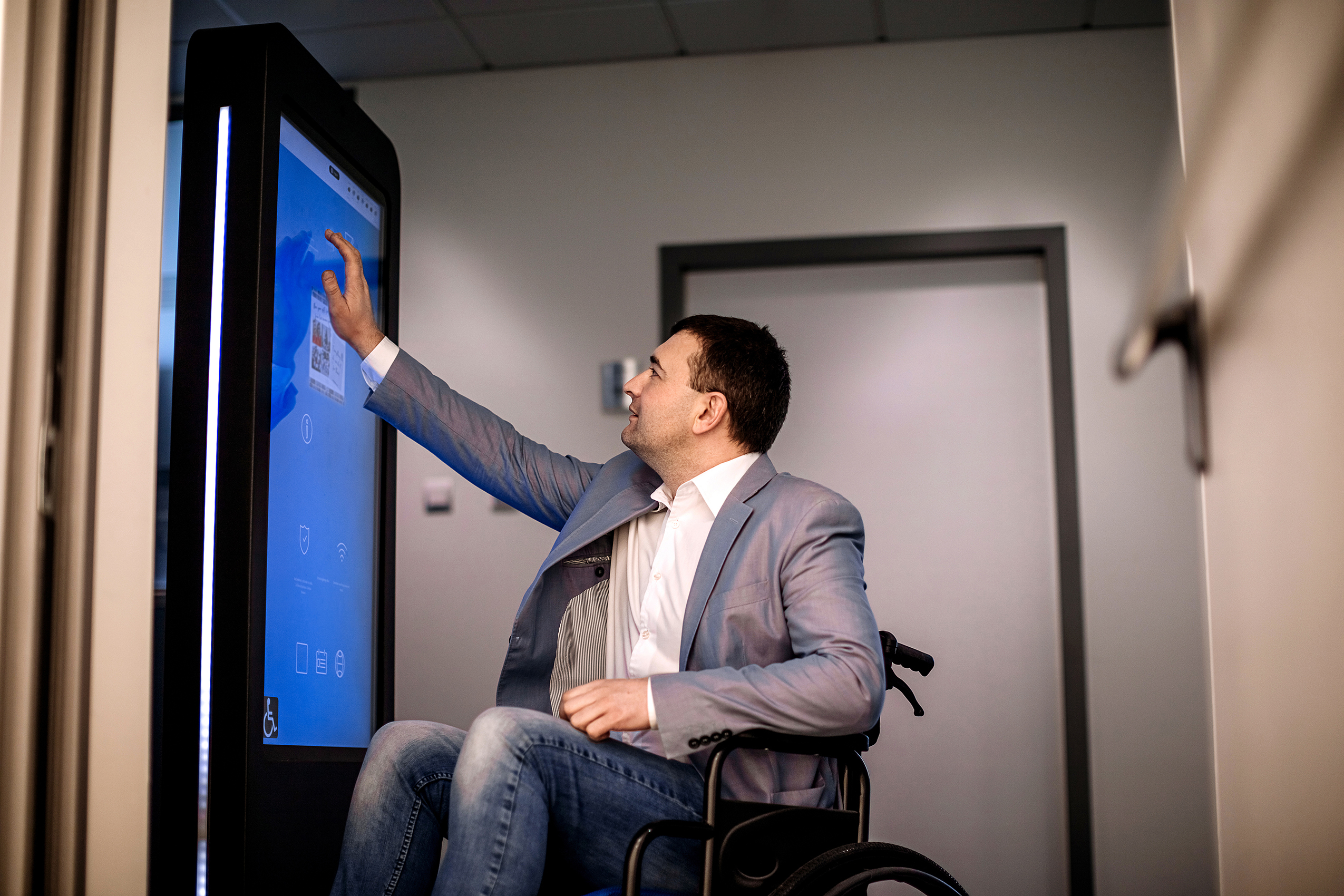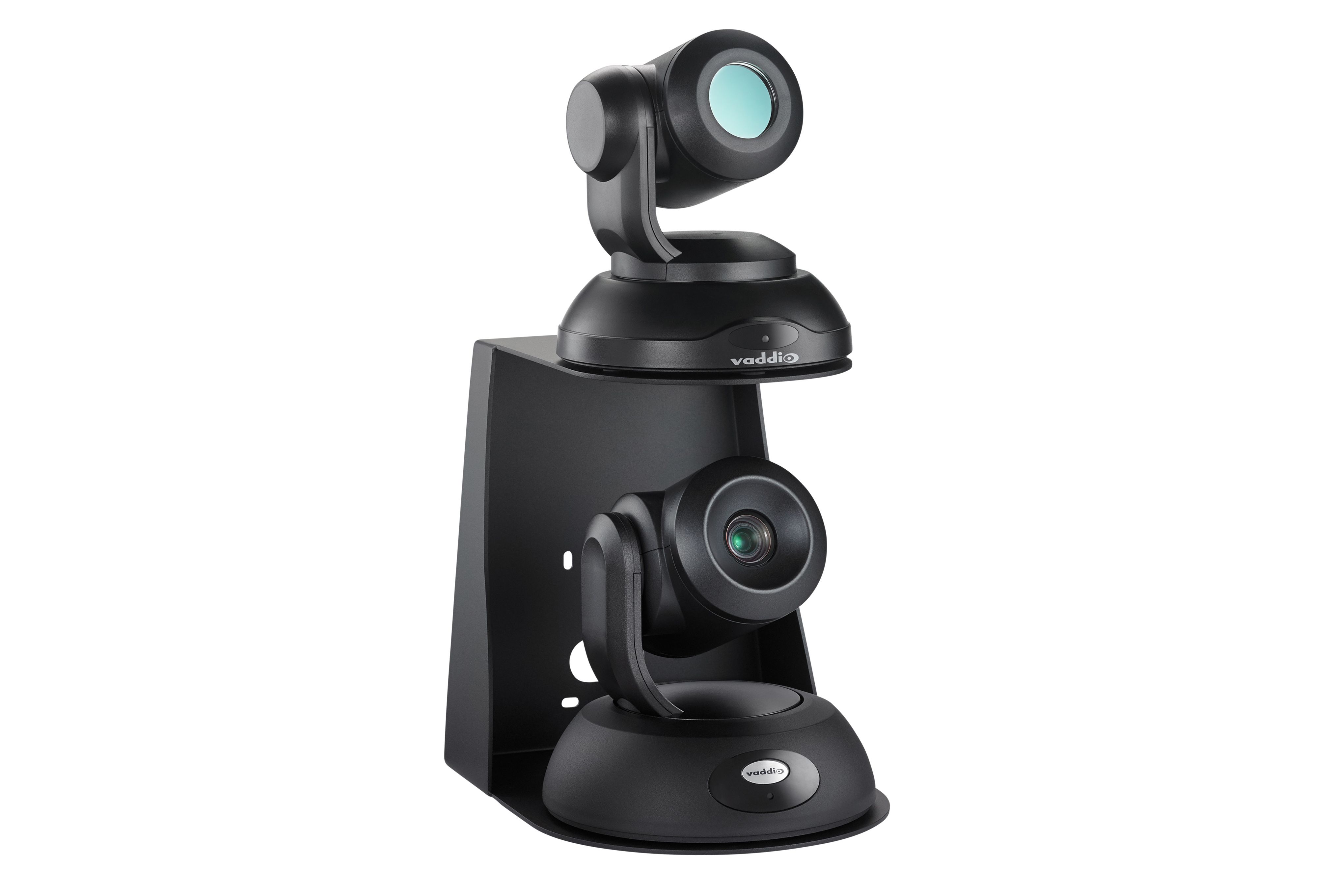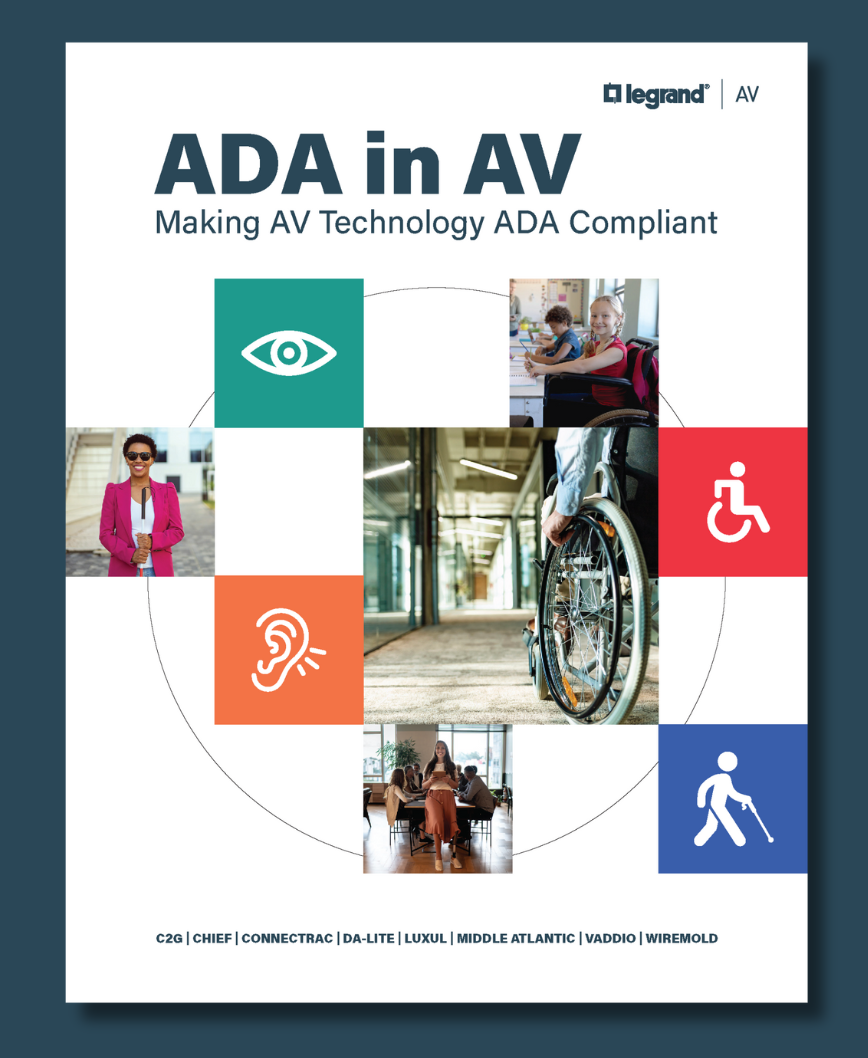Origins of ADA for AV
The Americans with Disabilities Act (ADA) was signed into law over 30 years ago on July 26, 1990, to ensure the provision of equal opportunities for individuals with disabilities. As we continue to learn and be cognizant of the needs of different groups of people to achieve equal access, it becomes increasingly important to understand the ADA and how we can advocate for it. Legrand | AV is proud to support this historic civil rights law to ensure that all people with disabilities have the same rights and opportunities as everyone else.
As an industry, it is vital to understand the scope and impact of this law in order to fully serve everyone that encounters an AV system. Though the question we get asked most often at trade shows is if a mounting solution complies with the ADA, the reality is AV design must consider many more aspects of accessibility than how far something sticks out from the wall. People rely on the systems we create to convey clear information, participate in learning opportunities, and receive guidance from others. It’s our job to make sure these systems are easily accessible to the widest possible variety of end users.
We looked around and couldn’t find a detailed source of guidance on the ADA specifically for AV systems, so we decided to create one with the assistance of experts in both fields. In it, you’ll find that the goal of any ADA-compliant system is so much more simply following instructions to obey the law. It’s an expanded design viewpoint. ADA-compliant systems enhance communication across the board.


Overview: What You'll Find in Our ADA Guide for AV
We’ve put everything we can think of when it comes to AV and the ADA into this guide. You’ll come away with a better understanding of the overall mission of the ADA as well as the range of people affected by mobility, vision, hearing and cognitive/developmental disabilities. It’s important to know how AV designs can impact someone who needs listening assistance as well as another person using a wheelchair. We even touch on ADA-related topics like the Twenty-First Century Communications and Video Accessibility Act, the U.S. Access Board, Educause’s Learning Space Rating System and many more resources.
If you want the nuts and bolts, this guide has those as well. Be sure your AV equipment lives in the sweet spot for operable parts, reach ranges, protruding objects and other physical considerations. We’ve got all the dimensions you need to know.

Audiophiles will want to be sure to see what AV can do to help everyone understand what’s being shared through an AV system. That includes a brief discussion on how we process language (our brains have a lot of redundancies you may not know about!). Knowing that helps to plan systems that include assistive listening, captioning, and receiver requirements.
We’re not done yet! If you are working in the changing landscape of educational and corporate environments, you’ll know how much active learning spaces or hybrid meetings are posing new challenges for optimizing experiences. This guide synthesizes these trends with ADA-compliance considerations to help you go into your next deployment fully prepared for success.
We wrap things up with some product lifecycle planning tips and a look ahead to see what may be coming next.
It’s never too early to plan ahead! Here for the solutions? We’ve got a selection of products from across the brands of Legrand | AV that can be incorporated into an ADA-compliant system. The brands of Legrand | AV have been designing solutions with the ADA in mind for years, and we are well-situated to help you meet your design requirements with solutions that serve as the building blocks of an ADA-Compliant ecosystem. Our hope is after reading this guide, you’ll have a solid appreciation for the fact that designing installations that keep everything within the ADA greatly improves the experience for everyone.
And our dedicated Solutions Engineering team is ready to be a sounding board and provide guidance through technical challenges, such as what to do if a mounted display is more than four inches from the wall and recessing it is not an option. How do you set up a rack room that can accommodate a technician in a wheelchair? Reach out with your questions, and we’ll help you improve the experience for everyone.
To get your copy of our guide “ADA in AV: Making AV Technology ADA Compliant,” fill out the brief form. The guide is not all. We’ll be continuing the conversation with more content, including blogs, podcasts and training, throughout the year ahead. We’re really excited about all of this and look forward to sharing more soon.
This blog series is intended to be used for educational purposes only. The intent is to serve as a guide to ADA regulations pertaining to the installation and usage of audio visual technology. However, none of it shall be construed as legal advice, nor should you rely on this content without obtaining your own project-specific verification.
Those seeking additional details or legally accurate definitions of the ADA’s audio visual technology requirements should contact www.ada.gov.
Explore ADA Resources

Dive Into the ADA Blog Series

ADA Diagrams Collection

Learn More at the Podcast

There's a Class for That
All of our AV University online courses are FREE and many offer CTS Renewal Units. You choose the courses that interest you the most –and work on your own time, at your own pace.
1 CTS / 1 CTS-D per course
Making Technology ADA Compliant - Series

0.5 CTS
RoboTRAK Certification

1 CTS
Using Design Thinking


